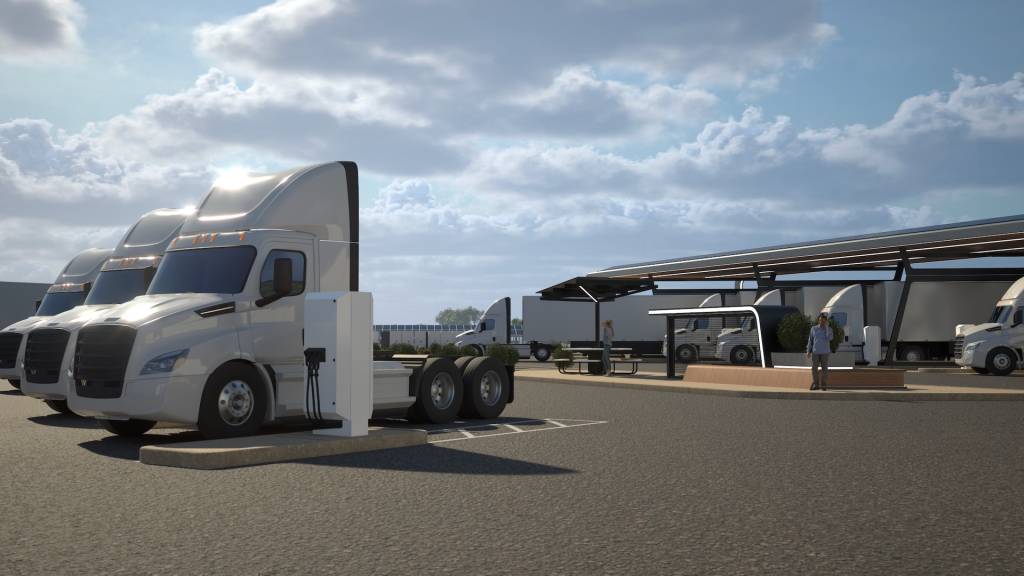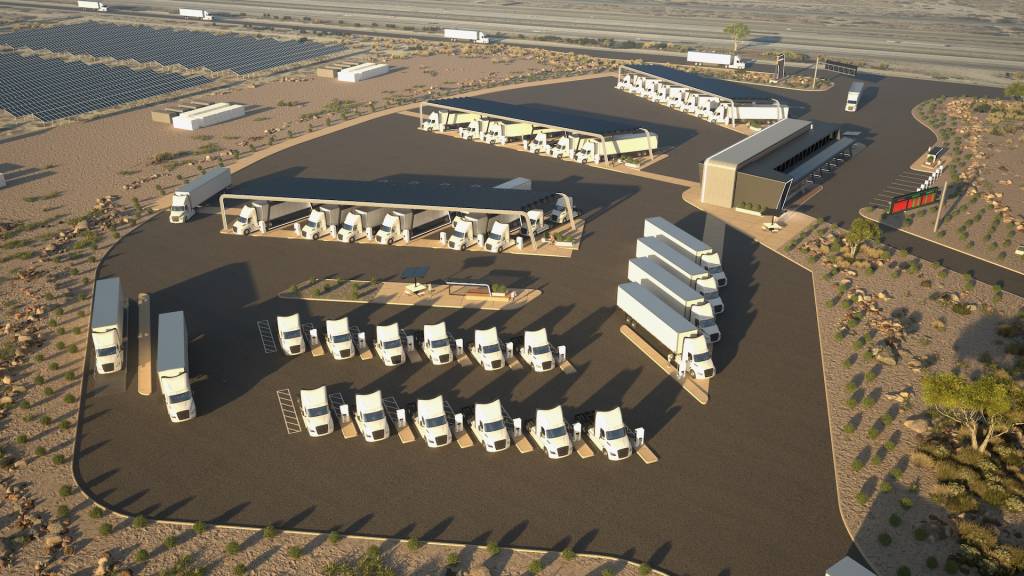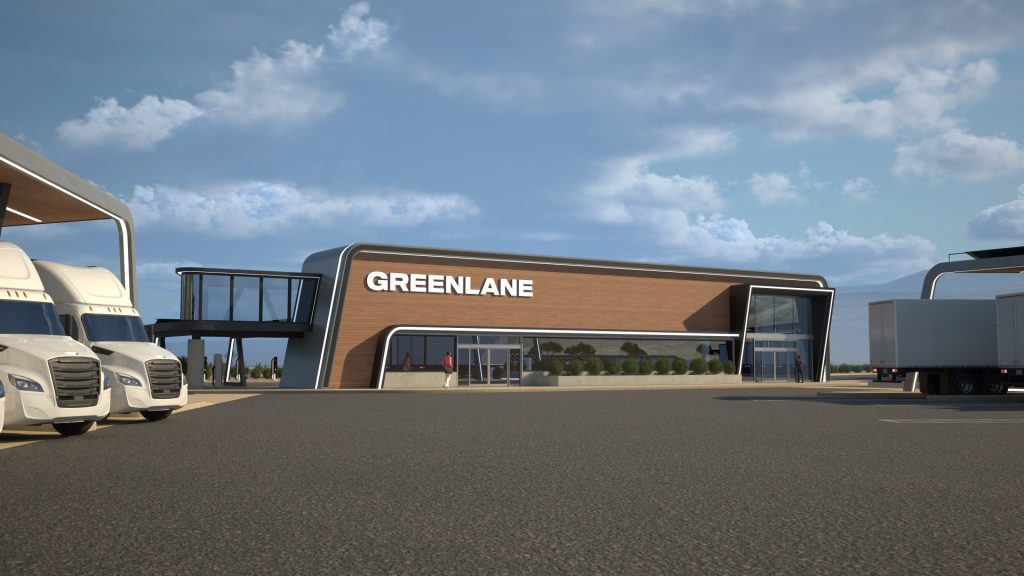Daimler Truck North America announced a $650 million joint venture to develop charging and hydrogen-fueling infrastructure for medium-duty and heavy-duty commercial trucks.
Called Greenlane, the joint venture was started in 2022 by Daimler, utility NextEra Energy Resources, and investment firm BlackRock Alternatives. It plans to add charging stations and hydrogen stations along “various freight routes,” along the coasts and in Texas, starting with a Southern California site, according to a Daimler press release.
The exact location and opening date will be revealed at a later time, but it may be no coincidence that the company announced this intent to “forge ahead” with the new project the same day that the Senate voted to block the encouragement of more electric trucks by rescinding tighter EPA rules—and just a couple days before California voted to adopt its own Advanced Clean Fleets rules in favor of more electric trucks.
Daimler didn’t offer any specifics on the number of sites, or the split between EV charging and hydrogen dispensing, but it said the initial focus will be on EV charging. Hydrogen stations will follow, along with access for light-duty vehicles to the sites, the company said.

Rendering of proposed Daimler Trucks Greenlane charging and hydrogen fueling site.
Some charging and/or hydrogen sites will be co-located with existing infrastructure, while others will be new greenfield construction. Daimler is also developing “a custom, commercial vehicle reservation platform” for users.
Note that Mercedes-Benz early this year announced its own charging network for cars and light trucks. But with the split of Mercedes Cars and Daimler Trucks, these are entirely separate business ventures.
Daimler Trucks has already taken some important steps toward a charging network for trucks, though. With the formalization of the Megawatt Charging Standard (MCS) last year, it rolled out one of the first megawatt-capable charging stations utilizing the MCS connector, near its North American headquarters in Portland.
Readying the station for that level of charging was an early test for what charging stations all over the nation will need to prepare for. For instance if 10 electric heavy-duty trucks were charging at one megawatt at a large truck charging station, the total load is the same as a large industrial plant.

Rendering of proposed Daimler Trucks Greenlane charging and hydrogen fueling site.
Tesla, meanwhile, isn’t expected to use the MCS connector and is instead opting for its own V4 Supercharger standard. Tesla Semi production started in late 2022, but the company doesn’t envision a large-scale public charging network like the Supercharger network that remains a trump card for Tesla’s passenger-car business.
Utilities, companies, and other stakeholders allied in 2020 to create a West Coast electric highway for commercial trucks, so it will be interesting to see if this effort parallels it or works in tandem. Will electric truck operators traveling through California, Oregon, and Washington soon have multiple charging options where none currently exist?

